It was not too many years ago that it was questionable if Peregrine Falcons 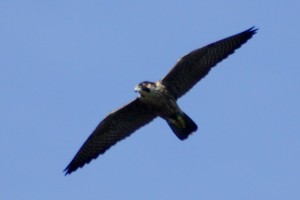 would continue to exist in several locations around the world, including the eastern United States, where it was actually extirpated. It has already been well-reported that the banning of DDT, captive breeding and hacking programs, and careful monitoring of the recovering population have led to a remarkable comeback for Falco peregrinus, to the point where it was removed from the federal endangered species list in 1999. It now nests and remains year-round in locations where one would be hard-pressed to find historical records of its presence, except during migration.
would continue to exist in several locations around the world, including the eastern United States, where it was actually extirpated. It has already been well-reported that the banning of DDT, captive breeding and hacking programs, and careful monitoring of the recovering population have led to a remarkable comeback for Falco peregrinus, to the point where it was removed from the federal endangered species list in 1999. It now nests and remains year-round in locations where one would be hard-pressed to find historical records of its presence, except during migration.
One such location is New York City. Sure, “Duck Hawks” have always migrated through, especially on the coast, and not too far up the Hudson River the birds historically bred on riverside cliffs, but I can only find records of Peregrine Falcons breeding in New York City in one location (the St. Regis Hotel in Manhattan) before they nested on bridges in human-made nest boxes in 1983. Now, according to the New York State Department of Environmental Conservation, which still lists peregrines as endangered in New York State, New York City “has probably the largest urban population of peregrine falcons anywhere, and peregrines nest on every Hudson River bridge south of Albany.”
Of course, Peregrine Falcons are awesome birds and it is certainly better that they exist and persist in the eastern United States then the alternative, but I have to wonder what the presence of year-round Peregrine Falcons is doing to the populations of shorebirds, puddle ducks, and other species that make their way through New York City on migration each year. A recent visit to Jamaica Bay’s East Pond gave me an inkling. When we arrived, the scene was idyllic, with the early morning sun behind clouds creating a colorful pastel reflection on the waters of the muck-laden pond.
As the tide came in and filled the Jamaica Bay basin more and more shorebirds came in to roost at the East Pond, as they do at every high tide. Roosting conserves energy when the birds can’t actively feed, and helps them to fatten up for the next stage of their long migration. It also gives birders like a me a chance to search through the flocks hoping to find rarities. But the shorebirds get no rest and the birders get no chance to sift through the thousands of birds when a Peregrine Falcon is hunting in the area.
Falcons are not, of course, the only reason that shorebirds flush from their roosting spots. Other birds of prey, careless birders and other people, mammalian predators, loud noises, the wind, and seemingly nothing at all can all cause birds to flush, but a “playful” peregrine outdoes them all. And on this particular day the Peregrine Falcon roaming around the East Pond either wasn’t trying very hard to catch prey or it was a really, really, really, lousy hunter. It kept making circuits of the pond putting the shorebirds up into the air and preventing them from roosting and resting. I tried to make lemonade from the lemons the Peregrine Falcon left me with but even the brief look I got of a Hudsonian Godwit when it put down in front of me wasn’t very great. By the time I realized it was there the falcon had flushed it again!
Two days later I was back at Jamaica Bay’s East Pond again, and at least two Peregrine Falcons were still keeping all of the shorebirds jumpy and other birders said that it had been the same in the intervening day. The numbers of dowitchers and sandpipers present was way down from two days earlier, and while the front that passed through was probably irresistible to shorebirds that have a long migration, I think at least some of the decline in numbers came from birds that did not want to refuel in a location loaded with rapacious raptors.
I don’t want anyone to get the wrong idea here. I fully support the protections that Peregrine Falcons have and don’t think that anyone should be trying to shoot them or cull them or catch them or anything like that. I just wonder how much thought went into the possible ramifications of providing Peregrine Falcons nesting platforms that are essentially adjacent to one of the best shorebird spots in the northeastern United States? And how many Peregrine Falcon pairs in New York City are too many? What happens if the falcons take over more Osprey nesting platforms like the one that was used this year? Perhaps it is time to stop providing and maintaining nesting locations and see how the falcons do on their own?
I don’t know the answer to these questions but I think that they need to be asked and answered. And, lest anyone think that I am a straight-up Peregrine Falcon hater I will say that one of the coolest biding experiences I have had in the last year was watching a Peregrine Falcon this past December at Flushing Meadows Park. I was there with my friends Kerry and Becky and we spotted a peregrine coming in over Meadow Lake struggling to carry a pigeon. The gulls went crazy and mobbed the falcon and, eventually, the falcon was forced to drop the pigeon into the lake in order to escape the persecution. The entire event lasted maybe a minute but it felt like an hour of excitement was packed into that one minute. I am sure that the falcon was from one of the bridges that connect Queens to the Bronx, in other words, it is one of the falcons that I think maybe should be left to its own devices to find a nesting spot.
It has been just over thirty years since the reintroduction of Peregrine Falcons in the eastern United States began. Their reintroduction was clearly a success and the major threat to their health, DDT, is no longer a threat considering that it was banned in the United States in 1972. So, the question now is how much energy and how many resources should be focused on continuing to support what is already a vibrant population, perhaps to the detriment of other species that do not get those resources or that may be negatively impacted by the very presence of Peregrine Falcons?


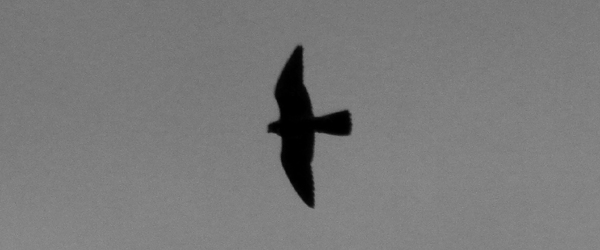
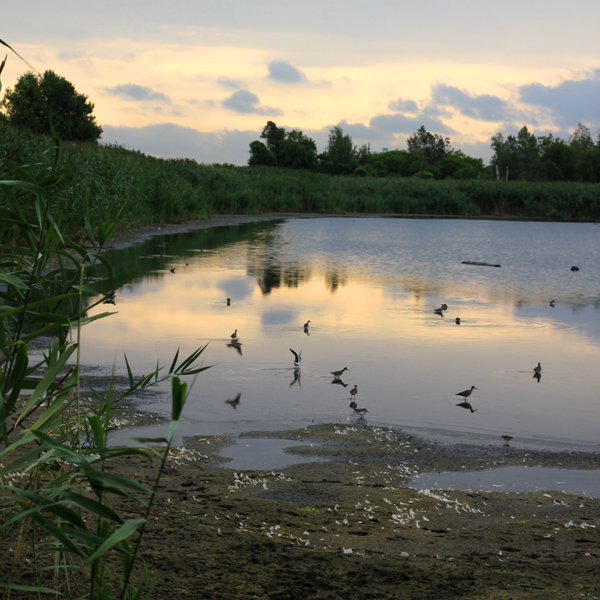
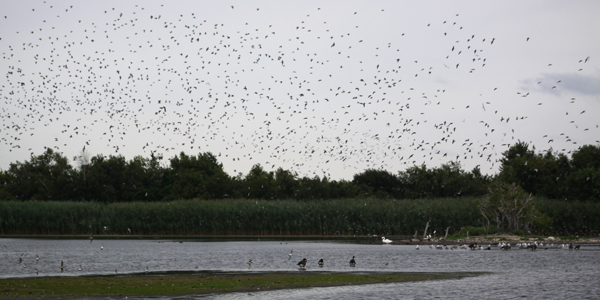
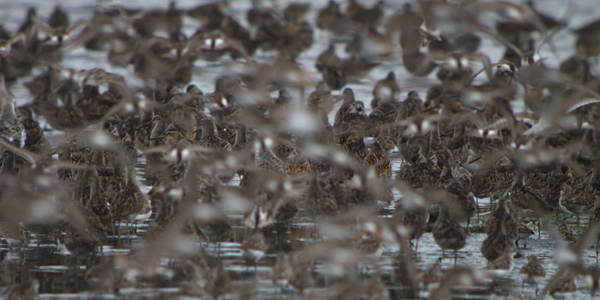
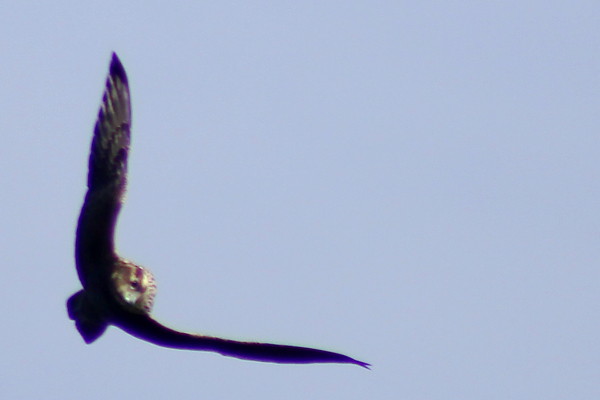
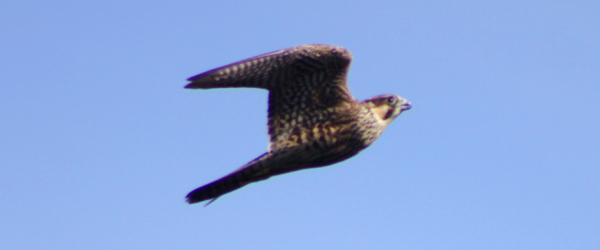
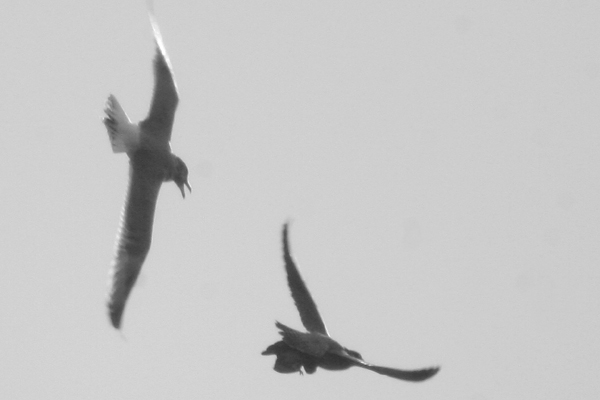
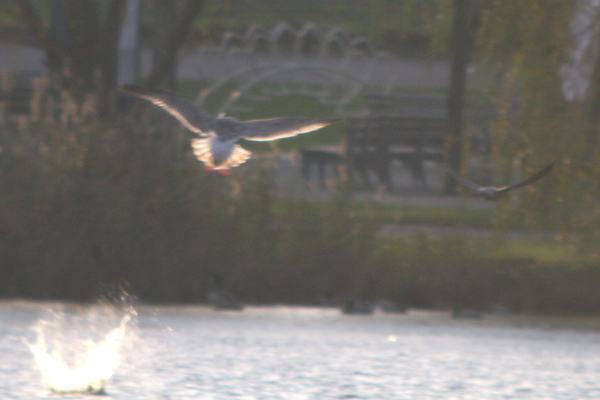











Would it be possible I wonder to encourage (by the cunning placement of nesting platforms) their nesting in areas which were full of feral pigeons (a win for all concerned (except the pigeons))?
From memory records of some of the English urban peregrines kills suggest they travel a fair way to hunt anyway so that may not work but it may at least reduce the casual disturbance.
Okay, a few random comments:
a) in Europe, Peregines nest(ed) both in cliffs and also on trees in abandoned nests of e.g. crows, ravens, buzzards etc. However, the ones breeding in trees were easy to hunt and therefore were completely wiped out, with only rock-dwelling birds remaining. Now, the same might have been the case in North America, with Peregrines being possibly regular breeders around Jamaica Bay in trees. So, just because there is no written record of them breeding there doesn’t mean they don’t belong there.
b) Your falcon is a young bird, so it was clearly a really, really, really lousy hunter. That’s the tough part of fall migration: having to roost in open spaces during the time of the year when young raptors have to learn how to hunt. Therefore, this stress to shore birds is not something they have to endure year-round.
c) It is my impression (so it may not be true after all), that shorebirds concentrate in certain areas maybe more than they used to a few hundred years ago, before most of the marshes and wetlands along the East coast of NA (and elsewhere) were destroyed and drained. Look at Jamaica Bay: how many % of the entire bay are good roosting habitat for shorebirds today, and what was it like 500 years ago? Therefore the shorebirds have to concentrate, making the flocks very attractive to raptors who will therefore also concentrate there, leading to a concentration of disturbance, so it’s concentration to the third (ha!).
I had a very similar experience once in a salt marsh in Germany: there was a flock of roughly 1000 Calidris sandpipers that we wanted to scan for Broad-billed Sandpipers. It was an impossible task, because the roosting area (roughly 100 x 200 yards) was regularly patrolled by 15 different raptors of several species, e.g. Peregrines, Hobbies, Marsh Harriers, White-tailed Eagles etc. It was a calm period when the shorebirds were on the ground for more than 15 seconds!
Under normal circumstances, the flock would simply have dispersed to different roosting sites nearby, leading also to a dispersal of the raptors. however, there were / are no alternative roosting areas nearby, all drained and destroyed, so the shorbirds (and the raptors) had no choice but to stay.
Okay, this was a lot of text just to make the following point: the reason for a (presumably) unnaturally high level of disturbance to shorebirds by raptors may not be indicative of a raptor population that’s too high but a habitat area that’s too small.
And as it is always better to fight the cause and not the symptom, the solution would be to provide more habitat for shorebirds, not necessarily trying to reduce the number of raptors.
Cheers!
I’d like to add though that I feel your pain, as you are surely able to tell by the little story of us searching for Broad-billeds with 15 raptors in attendance, and if I’d had a shotgun back then – the temptation would have been undeniably real.
🙂
NJ Audubon printed at least a couple of articles in the ’80s and ’90s, I seem to recall, expressing dismay at the introduction of resident Peregrines (of uncertain subspecies) to the marshes of New Jersey.
The birds introduced to Omaha in, what, the 1990s or so?, quickly learned that Interior Least Terns were a delicacy.
Things get really messed up when restoration is too easily successful: the temptation is to put things e v e r y w h e r e , whether they belonged there or not.
Tai Haku: I always worry that any strategy that encourages Peregrines to take pigeons will in turn encourage racing pigeon breeders to have a go at Peregrines on the grounds that they will mistakenly take ‘their birds’. It’s a pisspoor argument in my opinion, but you know what the anti-Peregrine fanatics are like.
Very interesting post Corey. It seems to me that the number of Peregrines would self regulate if no more artificial nesting sights were being constructed. The loss of wetland habitat seems to be the problem. The worst part of it is, it’s happening all over the country and the world. We need to conserve more habitat and when necessary, reclaim more wetlands.
My favorite birds are shorebirds and ducks and falcons are their top predators. Both shorebirds and falcons evolved and refined each other and I do think falcons have a place in the ecosystem even though I’m not a fan of them. From what I’ve heard, falcon numbers are still only a fraction of what they used to be before DDT was banned, so I think the environment can handle more than there are now. However, I’m not sure about reintroduction programs and feel that such sites need to be thoroughly researched before releasing another predator into the area.
They need to survive they are important Maby birds are over populating and killing other spiecises so try need to be here to hunt
People could maybe not have the nest boxes anymore. Great idea, but it seems like you do not like peregrines.
We always think we are so smart. We think that a bit of rational analysis we’ll reveal the solution to the problem. I believe, like economist Thomas Sowell, however, that there are no solutions, only tradeoffs, that have to evaluated by each and every individual.
Clearly, by definition, no successful predator exterminates its prey base. Peregrines, by preying on flying birds, can only exist where the density of available prey is high enough for them to hatch a clutch of 2-4 eggs and provide the young with food until they can provide for themselves, then the family can disperse through their environment. They are no longer tied to the physical location of the nest.
The reason there are so many peregrines in urban areas is because these areas are tremendous human created concentrations of food for their prey, which is all flying birds (and bats.) There aren’t “too many” caused by providing nesting ledges. Nesting ledges should to be increased (and improved) until their use starts to drop. Peregrines on the Queen Charlotte islands limit themselves to nests that are at least a quarter mile apart and most are over a mile or more from each other. This is on islands uninhabited by humans but used as nesting sites by millions of alcids, like the ancient murrelet, an 8 oz. auklet, the Northern Hemisphere version of a (flying) penguin.
The bottom line, taking Sowell’s perspective, is to realize that there is a trade-off between a peregrine trying its best to keep it’s life and a pigeon enthusiast or a shorebird fan being interrupted in their chosen pursuit. And, as Sowell points out, these questions are always decided from the point of view of personal interest.